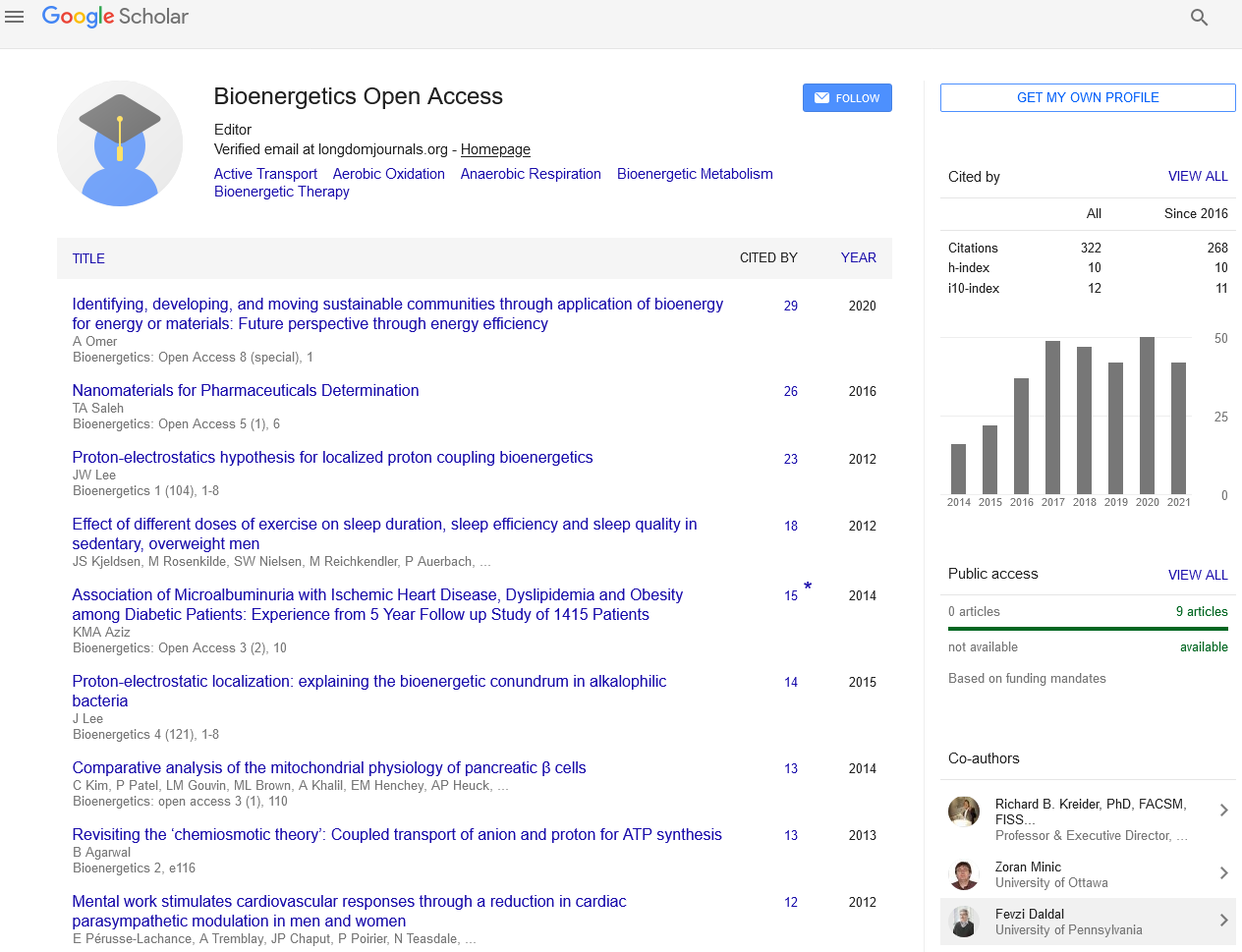Indexed In
- Open J Gate
- Genamics JournalSeek
- Academic Keys
- ResearchBible
- RefSeek
- Directory of Research Journal Indexing (DRJI)
- Hamdard University
- EBSCO A-Z
- OCLC- WorldCat
- Scholarsteer
- Publons
- Euro Pub
- Google Scholar
Useful Links
Share This Page
Journal Flyer

Open Access Journals
- Agri and Aquaculture
- Biochemistry
- Bioinformatics & Systems Biology
- Business & Management
- Chemistry
- Clinical Sciences
- Engineering
- Food & Nutrition
- General Science
- Genetics & Molecular Biology
- Immunology & Microbiology
- Medical Sciences
- Neuroscience & Psychology
- Nursing & Health Care
- Pharmaceutical Sciences
Abstract
Atomic Pressure Microscopy and Small-Attitude Scattering
Helmut schiessel
Fluorescent imaging techniques, in addition to electron microscopy, x-ray crystallography, NMR spectroscopy, Atomic pressure Microscopy (AFM) and Small-attitude Scattering (SAS) both with X-rays and neutrons are often used to visualize structures of organic significance. Protein dynamics can be located via neutron spin echo spectroscopy. Conformational alternate in structure can be measured the use of techniques such as twin polarization interferometry, circular dichroic, SAXS and SANS. Direct manipulation of molecules using optical tweezers or AFM, also can be used to reveal organic occasions in which forces and distances are at the Nano scale. Molecular biophysicists frequently don't forget complex biological events as structures of interacting entities which can be understood e.g. through statistical mechanics, thermodynamics and chemical kinetics. by using drawing knowledge and experimental strategies from a extensive style of disciplines, biophysicists are frequently able to at once study, version or even manipulate the systems and interactions of character molecules or complexes of molecules. structure of DNA x-ray scattering, structure issue of a continuous unmarried helix, scattering depth of an orientation ally averaged helix, single and double helix, scattering intensity of a double helix, info of the double helical -DNA.
Published Date: 2021-05-27; Received Date: 2021-05-06

